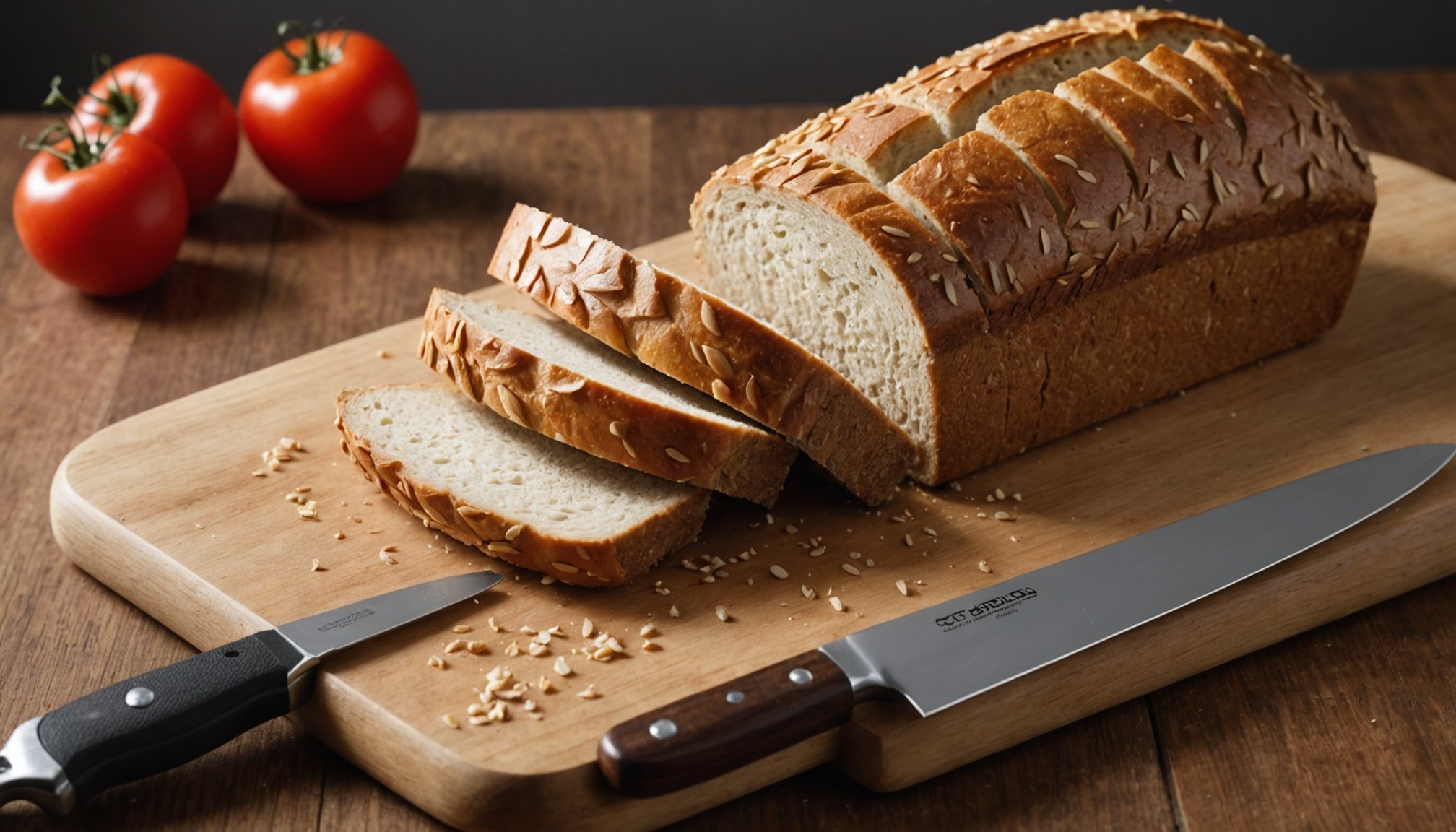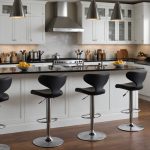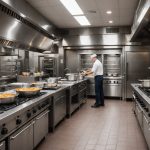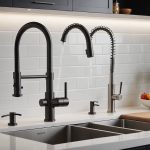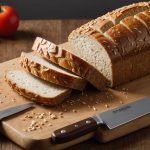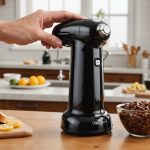Selecting the right bread knife can transform your baking experience. A precision slicing tool not only enhances presentation but also ensures even, effortless cuts. Factors like blade design, handle comfort, and material quality play vital roles in performance. Understanding these elements will guide you in choosing a knife that suits your needs, whether you're a weekend baker or a professional chef. Discover what sets the perfect bread knife apart and elevate your culinary skills with ease.
Understanding Bread Knife Features
Exploring the intricate world of bread knife features reveals how these tools enhance precision slicing. The blade material is crucial for performance. Stainless steel is popular for its durability and resistance to rust, while high-carbon steel offers sharpness and easy maintenance. Choose based on your slicing needs and maintenance preferences.
Have you seen this : Discover the Most Sturdy UK-Made Spice Racks: A Guide to Durability
Different serration styles significantly impact slicing. Scalloped serrations are gentle on soft bread, providing clean cuts without tearing. Pointed serrations are versatile, ideal for crusty loaves. The choice of serration affects the ease and precision of slicing, so consider your typical bread types.
Size and weight are equally important for ease of use. A longer blade can handle large loaves, while a shorter one offers control for smaller items. A lightweight knife reduces fatigue during extended use, yet some prefer a heavier knife for stability.
Additional reading : Discover the Most Sturdy UK-Made Spice Racks: A Guide to Durability
Key Features Comparison
| Feature | Options | Benefits |
|---|---|---|
| Blade Material | Stainless, High-carbon Steel | Durability, Sharpness |
| Serration Style | Scalloped, Pointed | Clean cuts, Versatility |
| Size and Weight | Long/Short, Light/Heavy | Control, Stability |
Understanding these elements empowers you to make informed decisions, ensuring your bread knife meets your culinary needs effectively.
Blade Material Comparisons
Exploring the nuances of blade materials is essential for selecting the right bread knife. Both stainless steel and carbon steel offer distinct advantages, influencing slicing precision and maintenance.
Stainless steel is renowned for its durability and resistance to rust. It's a popular choice for those seeking a low-maintenance option. This material ensures longevity, making it ideal for frequent use in humid environments. However, the sharpness might not match that of carbon steel.
In contrast, carbon steel blades are celebrated for their exceptional sharpness. They require regular maintenance to prevent rust, but their ability to retain an edge is unmatched. This makes them suitable for precise slicing, especially for crusty or dense breads. The trade-off is the need for diligent care, including drying after each use.
Key Considerations
- Durability: Stainless steel excels in resisting wear and tear.
- Maintenance: Carbon steel demands more attention to prevent corrosion.
- Slicing Precision: Carbon steel offers superior sharpness, enhancing cutting accuracy.
Ultimately, the choice between stainless and carbon steel depends on your priorities. Consider how often you use your knife, the types of bread you slice, and your willingness to maintain the blade. This understanding ensures you select a knife that complements your culinary practices effectively.
Serration Styles Explained
Exploring the intricacies of serration styles reveals their profound impact on bread knife performance and cutting techniques. Each style offers unique benefits for different types of bread.
Straight vs. Wavy Serrations
Straight serrations provide a clean, precise cut, ideal for crusty bread where minimal tearing is desired. In contrast, wavy serrations offer versatility, easily handling both crusty and soft bread. Their undulating pattern ensures a smooth slice without crushing the loaf.
Micro-serrated Blades
Micro-serrated blades are perfect for delicate bread, offering precision without compromising the crumb's integrity. These blades excel in cutting techniques that require minimal pressure, preserving the bread's texture. They are particularly effective in maintaining the shape of softer bread varieties.
Hybrid Designs
Hybrid designs combine elements of both straight and wavy serrations, providing balanced performance across various bread types. These serration styles are adaptable, making them suitable for diverse culinary needs. They excel in bread knife performance, offering both precision and versatility.
- Straight Serrations: Best for crusty bread
- Wavy Serrations: Versatile for all bread types
- Micro-serrations: Ideal for delicate bread
Understanding these styles ensures you choose the right knife for your cutting techniques, enhancing your overall culinary experience.
Handle Comfort and Ergonomics
Understanding the significance of handle comfort in bread knives is crucial for those who spend extended periods slicing. An ergonomic design not only enhances comfort but also reduces fatigue, allowing for prolonged use without strain. This is particularly important for those who frequently bake or entertain.
Handle Materials
Different handle materials offer distinct advantages. Wood handles provide a classic feel and aesthetic, while plastic handles are lightweight and easy to clean. Rubber grips offer superior comfort and slip resistance, making them ideal for precision control. Each material affects the overall ergonomic design and can influence the knife's balance and ease of handling.
Evaluating Grip Styles
A secure grip is vital for precision and safety. Contoured grips fit naturally in the hand, enhancing control during slicing. Textured grips prevent slipping, even when wet, ensuring safe use. Smooth grips, while aesthetically pleasing, may require more effort to maintain control. Evaluating these grip styles can guide you in selecting a knife that meets your specific needs.
- Wood Handles: Classic and durable
- Plastic Handles: Lightweight and hygienic
- Rubber Grips: Comfortable and slip-resistant
By considering these factors, you can choose a bread knife that not only complements your culinary tasks but also ensures a comfortable and efficient slicing experience.
Size and Weight Considerations
Finding the perfect balance for your bread knife can significantly enhance your slicing experience.
Recommended Sizes for Various Bread Types
Choosing the right bread knife size is crucial for effective slicing. Longer blades, typically 9 to 12 inches, are ideal for large loaves like sourdough or artisan bread. They provide the reach needed to cut through wide loaves in a single motion. Conversely, shorter blades, around 7 to 8 inches, offer more control for smaller breads like baguettes or rolls, allowing for precise, clean cuts.
How Weight Affects Slicing Technique
The weight of a knife influences its usability and the slicing technique employed. A heavier knife can offer stability, making it easier to cut through dense, crusty bread without exerting excessive pressure. However, a lighter knife reduces fatigue, particularly during extended use, and is often preferred for softer breads where delicate handling is required.
Finding the Right Balance for Your Needs
Achieving the right balance between size and weight is essential for a comfortable and efficient slicing experience. Consider the types of bread you frequently slice and your personal comfort preferences.
- Long Blades: Best for large loaves
- Short Blades: Ideal for smaller breads
- Heavy Knives: Stability for dense bread
- Light Knives: Less fatigue for softer bread
This thoughtful consideration ensures your bread knife meets your culinary needs effectively.
Maintenance Tips for Longevity
Ensuring your bread knife remains effective requires proper maintenance.
Best Practices for Cleaning and Storing Bread Knives
To maintain your bread knife, clean it immediately after use with warm, soapy water. Avoid the dishwasher, as this can dull the blade. Dry thoroughly to prevent rust, especially for carbon steel. Store in a knife block or on a magnetic strip to protect the blade and ensure safety.
How to Sharpen a Bread Knife Effectively
Sharpening a bread knife can be challenging due to its serrations. Use a sharpening rod specifically designed for serrated knives. Match the rod to the size of the serrations, and gently sharpen each groove. This technique preserves the knife's edge, ensuring it remains sharp for precise slicing.
Signs That Your Knife Needs Professional Maintenance
Recognizing when your bread knife requires professional care is crucial. If you notice difficulty in slicing or if the blade feels dull despite regular sharpening, it may be time for professional maintenance. Chips or significant dullness are indicators that expert sharpening is needed to restore the knife’s performance.
- Immediate Cleaning: Prevents rust
- Sharpening Rod: Essential for serrations
- Professional Maintenance: For severe dullness
These practices ensure your bread knife remains a reliable tool in your kitchen.
Comparing Popular Bread Knife Models
Exploring the best bread knives for your culinary needs.
Top-Rated Models for Different Bread Types
Selecting the right bread knife can transform your slicing experience. Among the top-rated models, the Wüsthof Classic 10-Inch Bread Knife excels for its durability and precision, making it ideal for crusty loaves. The Victorinox Swiss Army 10.25-Inch Serrated Bread Knife is praised for its versatility and affordability, suitable for both crusty and soft bread types.
User Reviews and Experiences
User experiences highlight the importance of comfort and performance. Many reviewers commend the Wüsthof Classic for its ergonomic design, reducing fatigue during extended use. The Victorinox knife is noted for its lightweight feel, which provides ease of handling. These bread knife reviews emphasize the value of a balanced design in enhancing the slicing process.
Price Range Analysis and Value for Money
When comparing bread knife models, price and value are critical considerations. The Wüsthof Classic, priced higher, is seen as a long-term investment due to its durability. In contrast, the Victorinox model offers excellent value for money, providing reliable performance at a more accessible price point.
- Wüsthof Classic: Durable, ergonomic, higher price
- Victorinox Swiss Army: Versatile, lightweight, affordable
Choosing the right knife depends on balancing these factors with your specific slicing needs.
Recommendations for Specific Needs
Finding the perfect bread knife for your culinary tasks can enhance your baking experience.
Recommended Knives for Crusty Artisan Breads
For those who frequently bake crusty artisan breads, selecting the right knife is essential. The Wüsthof Classic 10-Inch Bread Knife is renowned for its durability and precision, making it a top choice. Its sharp edge and robust build allow for seamless slicing through tough crusts without crushing the loaf.
Best Options for Slicing Soft Sandwich Bread
When it comes to slicing soft sandwich bread, a knife with a gentle serration is ideal. The Victorinox Swiss Army 10.25-Inch Serrated Bread Knife is highly recommended for its versatility and lightweight design. It effortlessly glides through soft bread, maintaining the integrity of the loaf.
Specialty Knives for Unique Baking Styles
For unique baking styles, consider specialty knives designed for specific tasks. A micro-serrated blade is perfect for delicate bread, offering precision without damaging the crumb. Additionally, hybrid designs provide balanced performance, catering to a variety of bread types.
- Wüsthof Classic: Best for crusty artisan breads
- Victorinox Swiss Army: Ideal for soft sandwich bread
- Micro-serrated Blades: For delicate bread
Choosing the best bread knives tailored to your needs ensures optimal performance and enhances your baking endeavors.
FAQs on Bread Knives
Delve into common queries and considerations for bread knife enthusiasts.
Common Questions About Bread Knife Use
When selecting a bread knife, many buyers wonder about its ideal use. Bread knives are best suited for slicing through both crusty and soft breads without crushing the loaf. Their serrated edge ensures clean cuts, making them indispensable in any kitchen.
Tips for First-Time Buyers
First-time buyers should consider the blade material and serration style. A stainless steel blade offers durability, while high-carbon steel provides superior sharpness. Assessing the knife's handle comfort and ergonomic design is also crucial for reducing fatigue during extended use.
- Blade Material: Stainless steel, high-carbon steel
- Serration Style: Scalloped, pointed
- Handle Comfort: Ergonomic, slip-resistant
Warranty and Return Policies
Understanding the warranty and return policies is essential when purchasing a bread knife. Many brands offer limited warranties that cover manufacturing defects but may not include wear and tear. It's advisable to review the return policy to ensure you can exchange or return the knife if it doesn't meet your expectations.
"A well-crafted bread knife can transform your slicing experience, providing precision and ease with every cut."
By addressing these FAQs, buyers can make informed decisions, ensuring their bread knife meets their culinary needs effectively.

